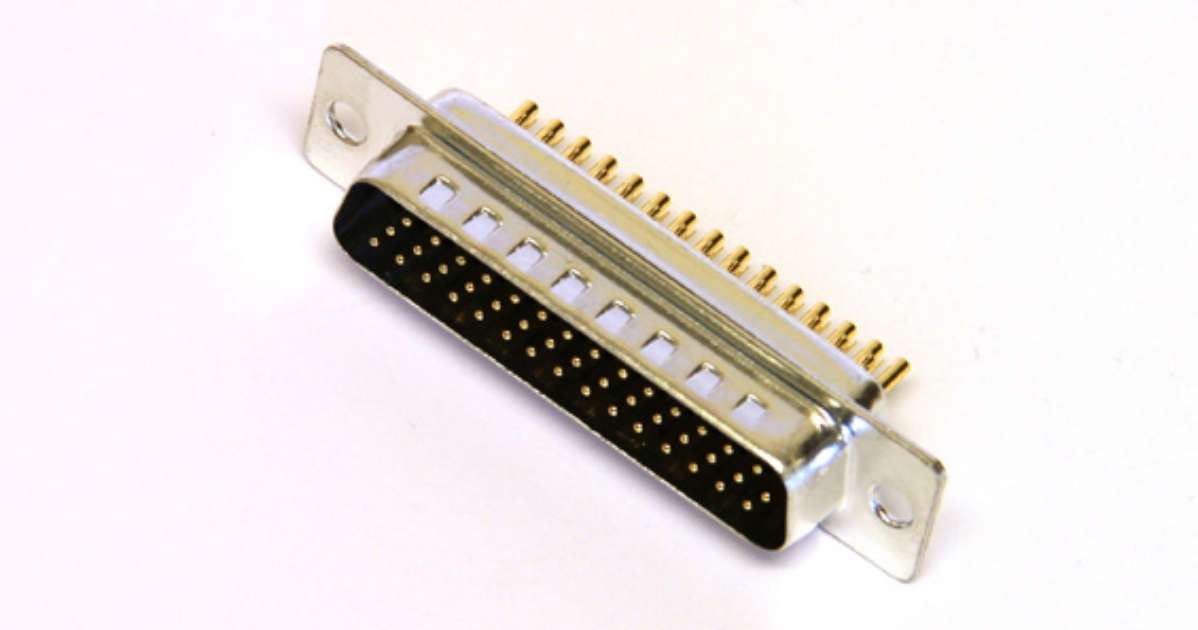Contact us for support: 01536 263411
Plug into discounts! With 15% off all products sitewide, because every connection matters!

D-subminiature connectors, commonly referred to as D Sub Connectors, are used in electronic applications to provide secure and reliable connections between different components. They are essential in many industries, from hospitals to care facilities, to organisations, and also for home use. In this blog post, we will discuss five things that are useful to know about D-Subminiature Connectors. We will go over the different types of connectors available on the market, the advantages of using D Sub Connectors over other types of connectors, how to choose the best D Sub Connector for your application, and the steps for installing and maintaining a D-Sub Connector. We will also provide tips for maintaining and troubleshooting your D-Subminiature Connector.
Contents
D-subminiature connectors are the industry standard for connecting different components in electronics and applications. They provide reliable connections in a range of different applications, including telecommunications, personal computers, industrial automation, aerospace, military and more. D-Sub Connectors can be used in a variety of environments, making them ideal for widely varied applications. They feature standardised interfaces, which make them easy to use, and they are reliable, providing secure connections and preventing failures in applications.
There are different types of D-Sub Connectors available in the market. Some of them include:
– Standard D-Sub Connectors: these are the most common connectors used in most applications, and they come in 9, 15, 25, 37 and 50 contact versions.
– High-Density D-Sub Connectors: They offer more contacts per connector, and they are used in space-constrained applications. They are available in 15, 26, 44, 62 and 78 contact versions.
– Filtered D-Sub Connectors: They have built-in filtering features that prevent electromagnetic interference and radiofrequency interference.
– Combination D-Sub Connectors: They are used in applications that require multiple functions and connections such as signal and power transfer.
– Waterproof D-Sub Connectors: They are used in applications where moisture, high humidity, water and dust could be a problem.
D sub connectors offer several advantages over other types of connectors, such as:
– Easy to use: They have standardised interfaces that make them easy to use and compatible with different components.
– Reliable: They provide secure connections that prevent failures in applications.
– Affordable: They are cost-effective, making them accessible to different markets.
– Durability: They are durable and withstand regular use and exposure to different environments.
– Versatility: They are suitable for a range of applications in different industries.
When choosing a D-Sub Connector for your application, there are different factors you should consider, such as:
– Size: You need to choose the size that fits your application and components.
– Performance requirements: You should consider the type of signals or functions you want to pass through the connector. You should choose the right number of contacts and the correct gender of the connector.
– Environment: You need to consider the conditions under which the connector will operate, such as temperature, humidity and vibrations. Select connectors that are compatible with these conditions.
– Budget: You need to consider the cost of the connector and the quantity you require.
Installing and maintaining a D-Sub Connector involves several steps to ensure that it operates correctly and efficiently. Some of the steps include:
– Preparing the connection surfaces: Ensure that the connections are clean and free from dirt, oil and other contaminants.
– Proper installation: Align the connectors correctly and ensure that the contacts mate fully.
– Maintenance: Clean the connectors regularly and inspect them for signs of damage or wear and tear.
– Clean the connectors regularly, using approved cleaning agents or solutions and a soft-bristle brush.
– Inspect the connectors regularly for damage or wear and tear, such as bent or broken pins.
– If the connection is not working, check for loose, dirty or corroded contacts or incorrect alignment.
– If the problem persists, consider replacing the connector or consulting a professional for assistance.
D-subminiature connectors are an essential component in electronics applications and offer reliability, versatility and affordability. Choosing the correct D Sub Connector for your application involves considering several factors, such as size, performance requirements, environment and budget. Proper installation, maintenance and troubleshooting of the connectors are essential for ensuring their optimal performance and longevity. We hope that this blog post has provided you with useful insights.
Don’t miss out on Component Buddy, your go-to source for all your connector needs! Experience the convenience and reliability of Component Buddy today and take your projects to the next level. So why wait? Explore the wide range of options and unlock endless possibilities with Component Buddy – your trusted connector partner!